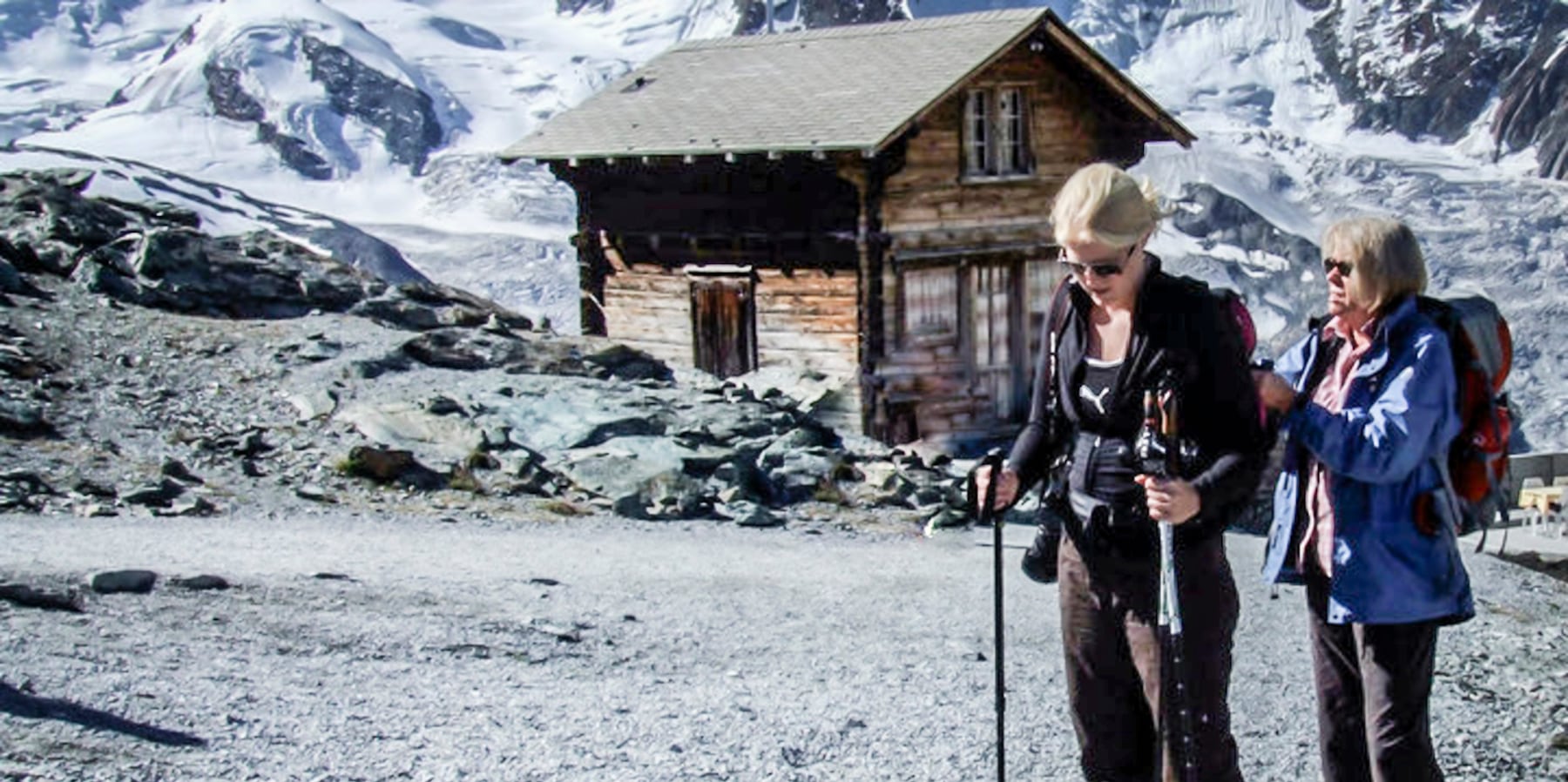A lot of parents worry about their children’s safety on epic alpine adventures. Gudrun Stroeer used to be one of them. But now, she’s summiting peaks alongside her daughter Sunny.
It is 3:30 in the morning and my mom, Gudrun Stroeer (65), is doubled over and breathing hard. She gazes at me with tired eyes and says quietly, “I can’t do this.”
I rotate my headlamp to the side of my head as I look at my mom, trying to take stock of her condition. Mom’s breathing is rapid and I can tell that she is struggling with fatigue—but she has also been moving faster than those 20-some-year-old guys from New York who are maybe a quarter of a mile below us now. The two of us and our guide, Emanuel, are at 17,000 feet on the flanks of Kilimanjaro, our faces chilled by a cold wind whipping through the frigid high desert zone that characterizes the volcano below the summit crater. “I can’t do this,” my mom repeats, then adds with defeat in her voice, “I just don’t think I’m strong enough.”
I lock eyes with Emanuel and shake my head. “Mom, you’re doing it. Try to get some food down and maybe slow down the pace a little… but keep moving. You’re OK. You’re going to make it.”
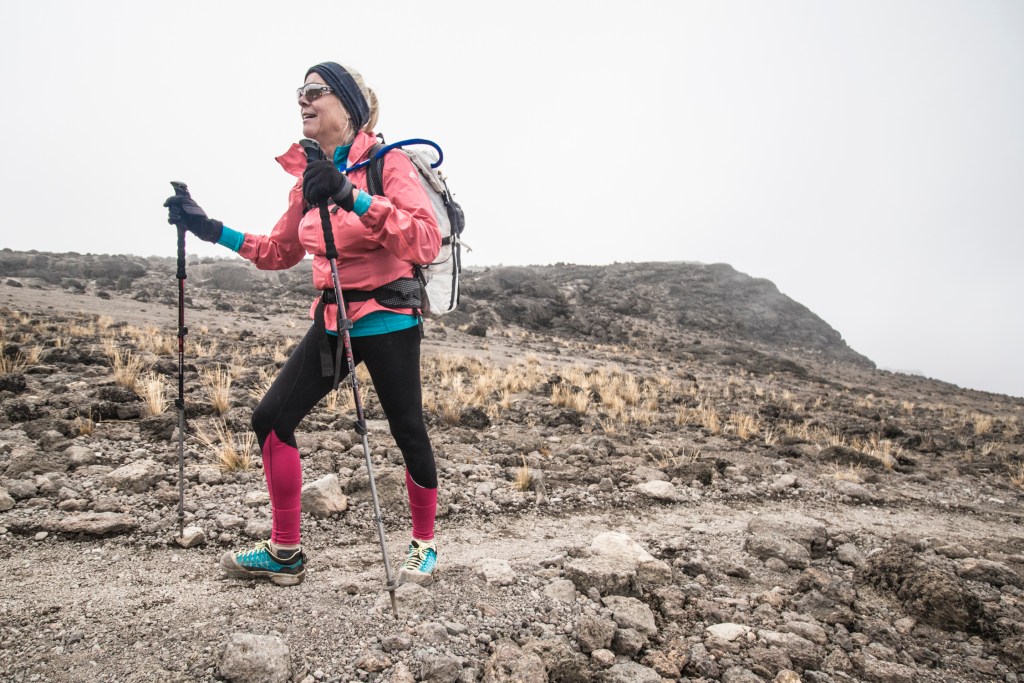
Gudrun on Kilimanjaro | Photo: Sunny Stroeer
Emanuel supports my pep talk with vigorous nods. I truly believe my mom is capable of reaching the summit, but deep down I wonder if I am being irresponsible by pushing her to go on. I’ve climbed many high altitude peaks before and have a love affair with hard efforts in the alpine: I know how much work and discomfort it takes, and I like to think that I know the difference between pushing hard and putting myself in danger. But my mom? She’s not an endurance athlete, nor a mountaineer, and she just turned 65 a few weeks ago. What if this is too much for her?
The first time I stood on the summit of a 14,000-foot peak, my mom was right there with me.
Then I remember: As much as I feel responsible for her safety up here, my mom is the reason we’re here in the first place, high above treeline, thousands of feet above the lush plains of Tanzania. And she understands what being in the high mountains means as much as I do. The first time that I wore crampons and roped up to cross a glacier, the first time I stood on the summit of a 14,000-foot peak, was just a few years ago—and my mom was right there with me.
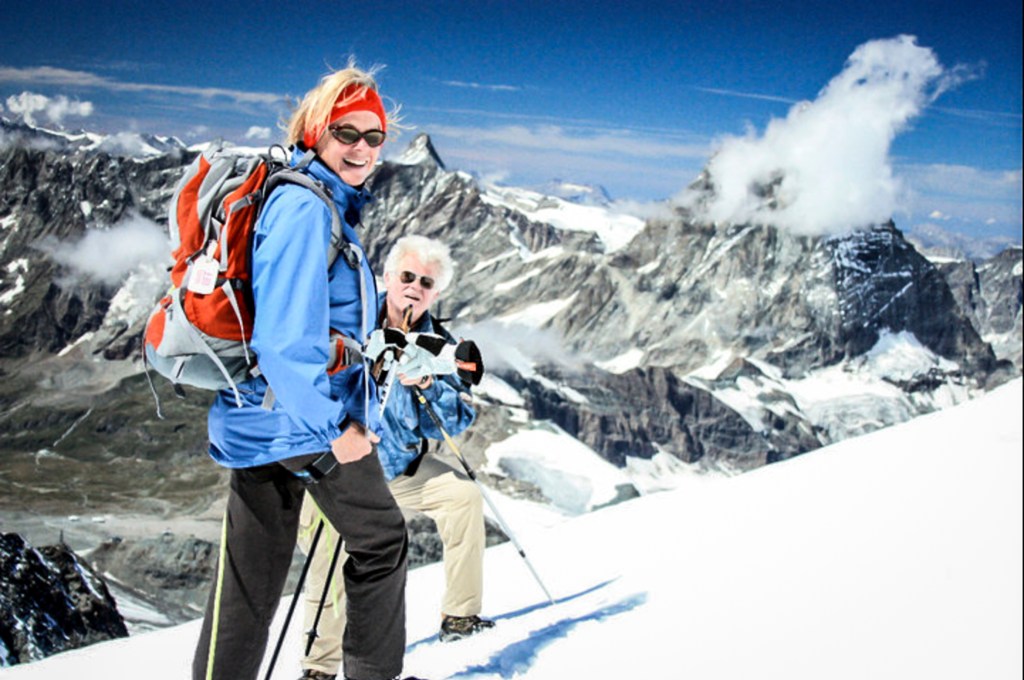
Family’s first fourteener in the Swiss Alps | Photo: Sunny Stroeer
It was a family trip to the Swiss Alps, instigated by my dad for my mom’s 59th birthday. We had no idea what we were doing. We rented crampons and a rope and had one ice axe between the three of us. Since I was the youngest and strongest in our party, I carried the axe—yet I had no idea how to use it, and if one of us had fallen, I likely wouldn’t have been able to save them.
That’s where my love affair with the alpine began.
But that’s not what I remember most vividly. What I remember is being up in the alpine with my parents, watching whisks of clouds race across the gentle slope of the glacier and feeling the wind whip around my goggles. The climb was an easy and short snow slope (thanks to one of Switzerland’s seemingly infinite number of cable cars), and reaching the summit felt spectacular. Or maybe more accurately: spectacularly exposed. My dad wasn’t fazed by the 360-degree drop-offs surrounding us or the strong winds threatening to knock us off our feet, but my mom seemed just as unnerved and vulnerable up there as I did back then. We snapped summit shots and hurried down.
And that’s where my love affair with the alpine began. Since that family outing in Switzerland, I have hiked, climbed and peak bagged all over the Americas, the Alps and Nepal. I’ve learned how to stay safe and confident above treeline, how to navigate exposed snow and rock and, yes, how to use an ice axe and deal with the risk of crevasse falls. Since that rookie day in the Swiss Alps, I have worked hard to become skilled and strong in the mountains, which is why my mom and I are here, now, on steep switchbacks of loose scree halfway between high camp and the highest point in Africa.
“The mountains are dangerous. Do you know how many people die in the mountains each season?”
When I first announced to my parents that I was quitting my job to focus on mountain running and climbing, my mom’s reaction was mixed, not because she was worried about my career path or finances, but because of the inherent risk. I think she must have remembered our family fourteener outing and the fear that she and I both felt on that distant summit. “Please, think about this some more,” she said. “The mountains are dangerous. Do you know how many people die in the mountains each season?”
But that was 18 months ago. My mom’s take on the mountains began to evolve, and when I started publicizing a Kilimanjaro expedition, her immediate reaction was a simple question: “Do you think I could come along?”
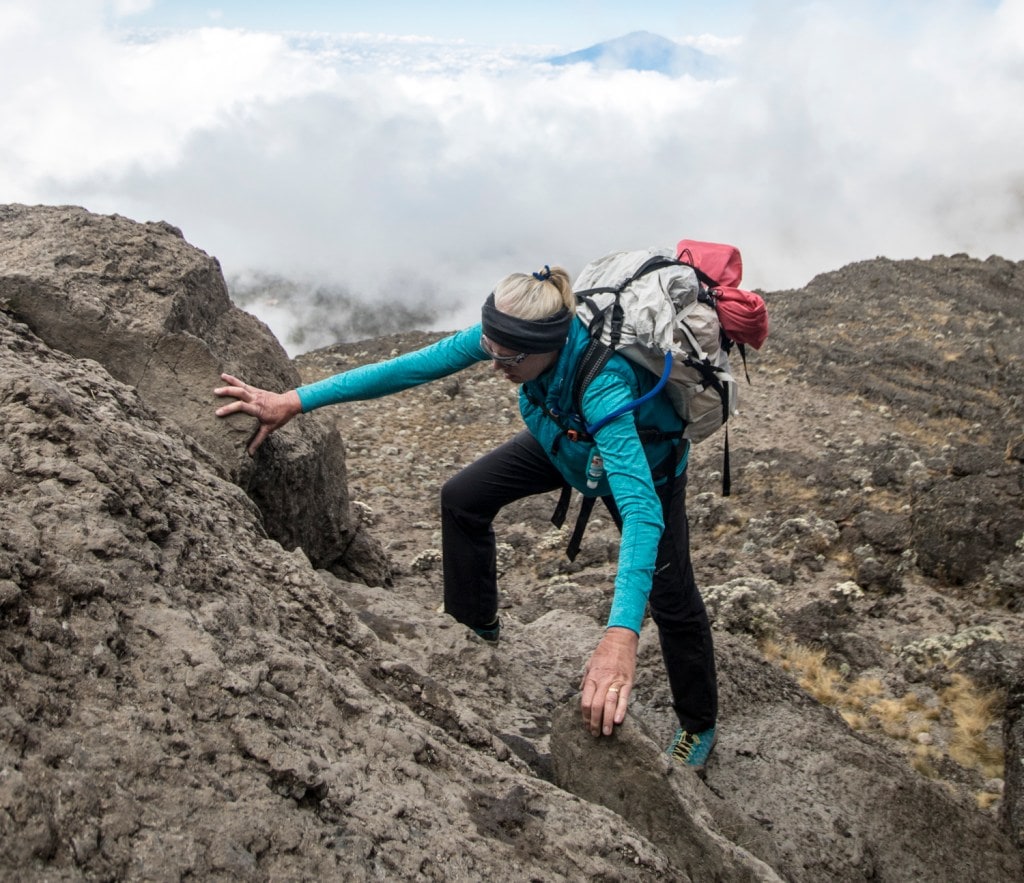
Climbing through Barranco wall, the most exposed section on Kilimanjaro’s Machame Route | Photo: Sunny Stroeer
So here we are at 17,000 feet, in the middle of the night, with more than 2,000 feet of climbing left to the summit. I know she’s exhausted. I know she’s pushing her physical limits, potentially further than she’s ever pushed them before. And I believe she can do it, and that together we have good enough decision-making skills and open enough communication that we won’t push blindly into critical territory.
“Mom, you’re doing awesome,” I tell her once more. “We’re halfway up to the summit, and it’s still hours before sunrise. Go slow and steady. You’ve got this.”
I have tears in my eyes as my mom takes her last steps toward the summit.
Four and a half hours later, shortly after an incredible sunrise over the African plains framed by Kilimanjaro’s remaining glaciers, I have tears in my eyes as my mom takes her last steps toward the summit. I am ecstatic for her and have to try hard to maintain my composure as I watch my mom and Emanuel, who’s been by her side step by step, embrace in a giant, long-awaited bear hug below the iconic summit sign at 19,341 feet. If there was ever any question of to whom I owe my own drive and motivation to venture out on difficult missions, she is the answer.
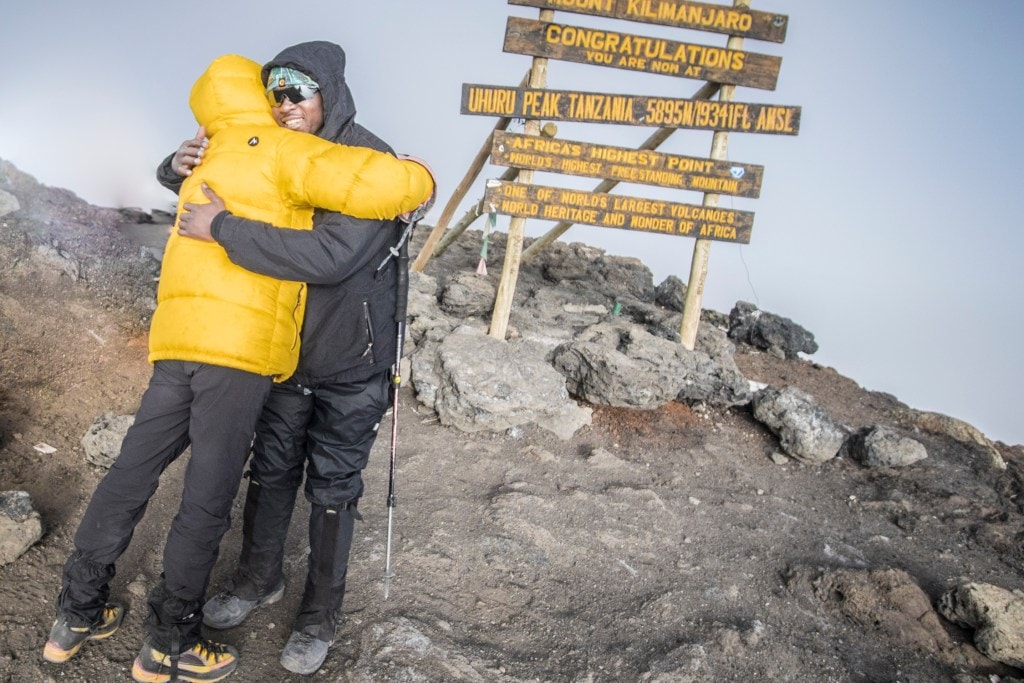
Hugging at the summit | Photo: Sunny Stroeer
A few days later we’re back home, and my mom is still glowing. “What are we going to do next?” she asks me across the kitchen table over a glass of wine. At first, I chuckle, thinking she must be joking. But she isn’t.
I think back to where it all started and propose a wild pitch: “Mom, I’ve got this ridiculous idea. Do you know what the Haute Route is? You know, that alpine traverse from Chamonix in France to Zermatt in Switzerland?”
Zermatt is where we climbed our first fourteener a few years back, and mom is all ears. “It’s 120 miles with 50,000 feet of ascent going across a ton of passes, hut to hut,” I continue. “We could hike the whole thing over 10-ish days, or maybe skip some of the harder stages and just cherry pick which sections we want to walk in their entirety.”
Mom looks at me with a twinkle in her eye. “Skip sections? Hell no. If anything, I want to do the whole thing… unless, of course, you think that it’s going to be too much for me?”
And just like that, we decide that my mom’s 66th birthday is going to be spent on a two-week mother-daughter thru-hike of one of Europe’s most classic alpine routes. There are going to be hard days—days my mom is training for like a fiend—just as there are going to be some exposed sections with 100-foot vertical ladders that she is not excited about but is still determined to get done. It may mean that I will carry lightweight harnesses and a 100-foot piece of cord for the entire duration of the hike in order to give her a belay in those spots. But it’ll be worth it because sharing these mountain adventures and the peace of early mornings in the alpine with my mom is an experience I wouldn’t trade for anything in the world.
